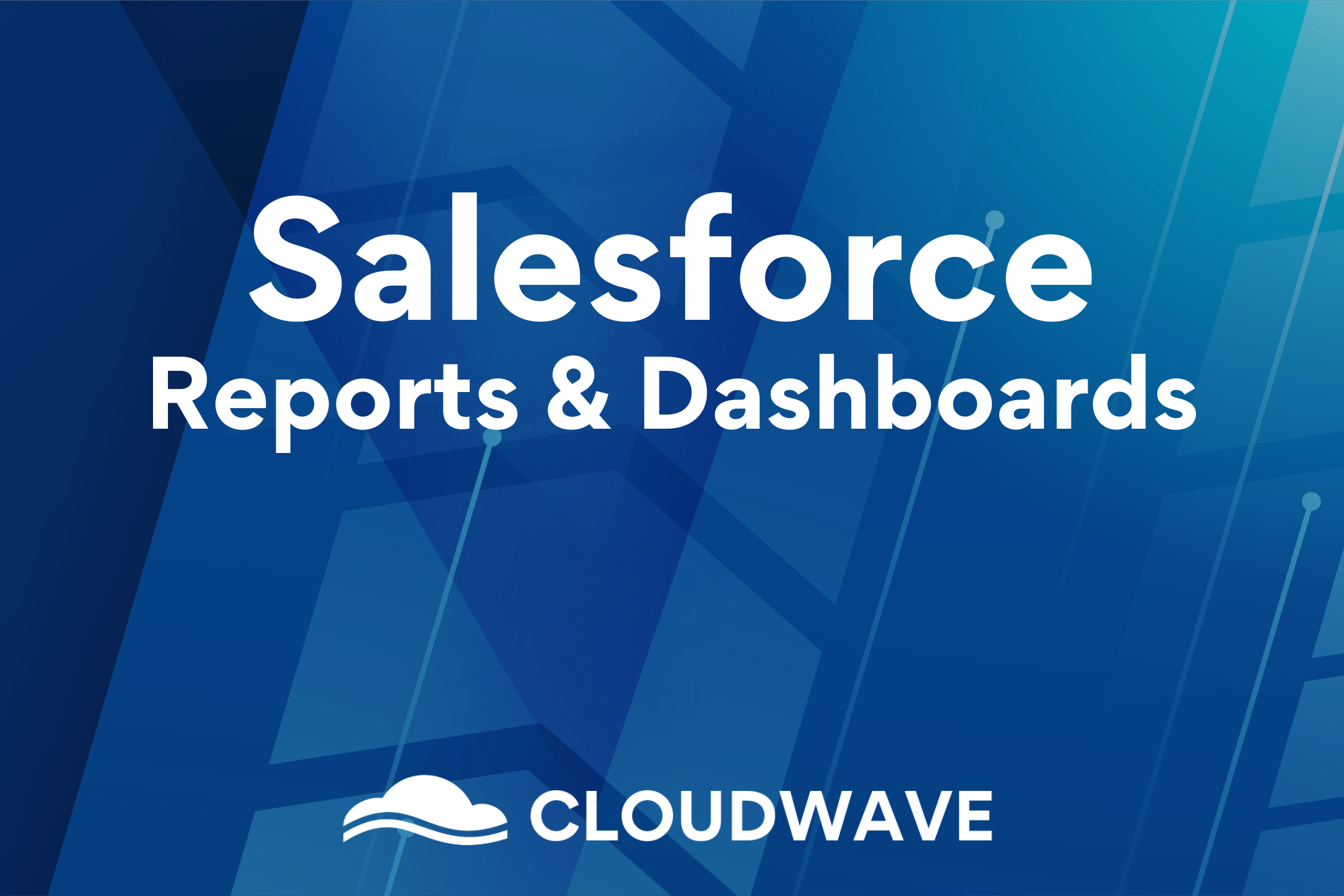A Step-by-Step Guide to Building Effective Salesforce Reports and Dashboards

Organizations generate vast amounts of information on a daily basis, and making sense of this data is crucial for informed decision-making. Salesforce offers a robust reporting and dashboarding system that empowers organizations to transform raw data into actionable insights. In this guide, we will walk you through the step-by-step process of building effective Salesforce reports and dashboards to unlock the full potential of your data.
Step 1: Define Your Objectives
Before you dive into creating reports and dashboards, it's essential to clearly define your objectives. What are the specific insights you're looking to gain? Are you tracking sales performance, customer service metrics, or marketing campaign results? Having a clear understanding of your goals will help you choose the right data points and visualizations.
Step 2: Gather and Organize Data
Data is the foundation of any report or dashboard. Start by collecting the necessary data from your Salesforce instance. Salesforce offers a variety of standard and custom objects that hold valuable information. Ensure that the data is accurate, up-to-date, and relevant to your objectives. Cleanse and organize the data as needed to eliminate inconsistencies.
Step 3: Create Custom Report Types
Custom report types allow you to define relationships between objects and access data that is tailored to your requirements. If the standard report types don't fully meet your needs, consider creating custom report types. This step is crucial for ensuring that your reports contain the exact information you need for analysis.
Step 4: Design Your Reports
Now comes the creative part: designing your reports. Salesforce provides a user-friendly report builder with drag-and-drop functionality. Select the report type you want to work with and add relevant fields, groupings, and filters. Grouping data allows you to segment information and analyze trends, while filters help you focus on specific subsets of data.
Step 5: Choose Appropriate Visualizations
Visualizations turn raw data into understandable insights. Salesforce offers a range of visualization options, including tables, charts, graphs, and gauges. Select the visualization type that best represents your data and supports your analysis. For instance, a line chart might be ideal for tracking sales trends over time, while a pie chart could effectively showcase the distribution of leads across sources.
Step 6: Build Dashboards
Dashboards provide an at-a-glance view of key metrics and reports. After creating your individual reports, assemble them into a dashboard. Dashboards allow you to combine various visualizations on a single page, offering a comprehensive overview of your data. Arrange the components logically, and consider using color coding or highlighting to draw attention to critical insights.
Step 7: Set Up Automation and Sharing
Salesforce allows you to schedule report runs and dashboard refreshes automatically. Take advantage of this feature to ensure that your insights are always up-to-date. Additionally, configure sharing settings to grant appropriate access to team members. You can control who can view, edit, or subscribe to reports and dashboards, promoting collaboration and data-driven decision-making.
Step 8: Regularly Review and Refine
Data analysis is an iterative process. Regularly review your reports and dashboards to identify trends, anomalies, and opportunities. As your business evolves, your reporting needs might change as well. Be prepared to refine your reports and dashboards to accommodate new objectives and data sources.
Salesforce Reporting Made Simple
Building effective Salesforce reports and dashboards is a transformative process that empowers organizations to harness the power of their data. By following this step-by-step guide, you can create reports that provide valuable insights and dashboards that offer a holistic view of your business's performance. Remember that the key lies in clearly defining your objectives, collecting accurate data, and selecting the right visualizations to convey your insights. With these tools at your disposal, you'll be well-equipped with Salesforce to make informed decisions and drive your business forward.
Custom Salesforce Dashboards and Integrations with CloudWave
If connecting your data from a platform like Google Cloud, Smartsheet, Oracle, AWS, Azure and more to your Salesforce Org is crucial to making better business decisions, CloudWave can help. Our consultants have many years of Salesforce experience spanning integrations with APIs, custom dashboards for better data visualization, Salesforce app development, and more.